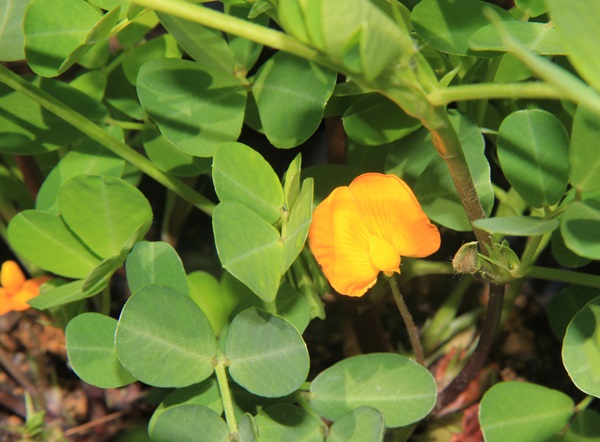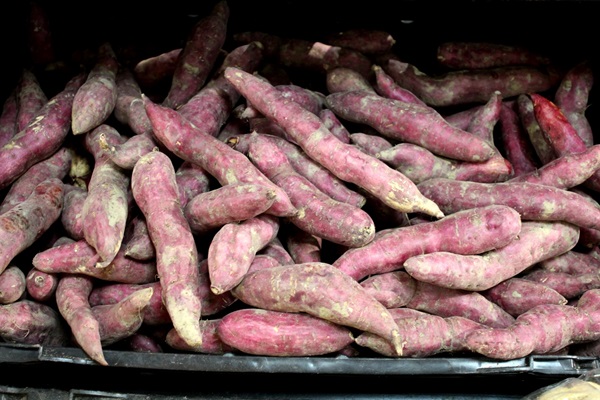Growing Five Root Vegetables
Get to know five root vegetables you can grow in your home garden, perfect for use in preparing a tasty dish in the kitchen.
Arrowroot

Photo credit: Wilson Wong
Arrowroot (Maranta arundinacea) grows well in fertile, loamy soil that drains well. This plant thrives in both full sun and semi-shade and requires moderate watering. It can be propagated by division of plant clusters or rooting small pieces of the tuberous root.
The tuberous roots are made into flour and is commonly used in biscuits, cakes, jellies and puddings. The roots can also be sliced thinly and fried as chips.
Peanut

Photo credit: Jessica Teo
The Peanut plant (Arachis hypogaea) grows well in fertile, well-draining soil and thrives under full sun. It requires moderate watering and is propagated by seeds. Peanut’s lateral roots have nitrogen-fixing nodules.
The seeds can be eaten raw or cooked, and are key ingredients in confectionary, sauces and snacks.
Radish
-jane-li-(1).jpg?h=750.516&w=540.414)
Photo credit: Jane Li
Radish (Raphanus sativus) grows best in well-draining soil for optimal tap root development. This plant thrives in full sun and requires moderate watering.
The swollen tap root is peeled and cut into small pieces which are cooked in soups and meat dishes. The leafy tops can also be stir-fried and eaten as a leafy vegetable.
Sweet Potato

Photo credit: Shi Biying
Sweet Potato (Ipomoea batatas) is best grown in well-draining soil. It thrives in full sun and requires moderate watering. It can be propagated by stem cuttings or sprouts that grow from the tubers.
The tubers may be boiled, baked or fried, or made into flour for making biscuits, bread and pastries. The young shoots can be stir-fried and eaten as a leafy vegetable.
Tapioca

Tapioca (Manihot esculenta) prefers to grow in well-draining soil. It thrives in full sun and requires moderate watering. It can be propagated by woody stem cuttings.
The tubers are a rich source of carbohydrates and the young leaves are eaten as a leafy vegetable. It is advisable to cook them thoroughly before consumption.
How to Propagate New Plants
Depending on the species, ‘root vegetables’ can either be grown from seed or propagated vegetatively from plant parts such as corms, rhizomes, tubers and stems. To encourage more root growth, make sure that the soil used is loose and well-draining with plenty of depth.
From Seeds
Obtain seeds from the fruit of a healthy, mature plant. Seeds can also be bought from nurseries or shops. Plant the seeds directly into the ground. This is the most straightforward way to grow peanuts and radishes.
From Stem Cuttings
Cut a mature but green section of a stem and remove some of the leaves to reduce water loss by transpiration. Place the cutting in water until it produces roots, and then plant it in soil that drains well. Plants that can be grown from stem cuttings include Sweet Potato and Tapioca.
From Corms, Rhizomes and Tubers
Buy these as raw, unprocessed produce from supermarkets or wet markets. The storage organs should ideally have started budding before planting, so select ones with new growth or leave them in a cool dry place to grow. Once new buds form, bury the corm, rhizome or tuber in the soil, exposing only the growing bud(s).
Plants grown through vegetative propagation take a shorter time to mature. They also retain all the characteristics of the parent plant.
Gardening with Edibles
The City in Nature vision seeks to bring greenery closer to all residents. The community plays a key role in the ownership and stewardship for nature which will benefit our health and well-being.
NParks is partnering residents to make Singapore our City in Nature and spark a love for community gardening through the Gardening with Edibles initiative launched in June 2020. Under this programme, some 400,000 free seed packets have been distributed to interested members of the public. Relevant resources are also available online, to guide gardeners along the way.
Also, NParks is expanding the allotment gardening scheme and the Community in Bloom programme, to welcome even more residents into the gardening family.
The Gardening with Edibles initiative is aligned with Singapore’s national strategy to strengthen our food resilience. The “30 by 30” goal, led by the Singapore Food Agency, aims to produce 30% of Singapore’s nutritional needs locally by the year 2030. The programme is jointly funded by founding partners DBS Bank and Tote Board through the Garden City Fund.
Growing your green thumb
Are you a new gardener looking to develop some green fingers? Visit NParksSG, our refreshed YouTube Channel that serves as a one-stop repository for close to 300 video resources. It covers step-by-step topics ranging from soil, to seed starting, to trellis building and even how to cook your edibles.
For gardening enthusiasts, do check out our gardening with edibles playlist!
Gardening with Edibles playlist (if possible to include playlist, as there are no specific videos on root vegetables)
For more information on gardening resources and tips, please visit NParks Gardening Resources on What to Grow Looking to join a garden? Check out our Community in Bloom programmes to find Community Gardens near you or to start your own.
For more information about the flora and fauna found in Singapore, please visit NParks Flora and Fauna Web.
If you like what you read, follow us on Facebook, Instagram, Telegram and YouTube to get the latest updates.
Text from Community in Bloom





Have views or comments on this article? Let us know via this form. If you would like to give us feedback on any other areas relating to our parks and gardens, please submit via https://www.nparks.gov.sg/feedback